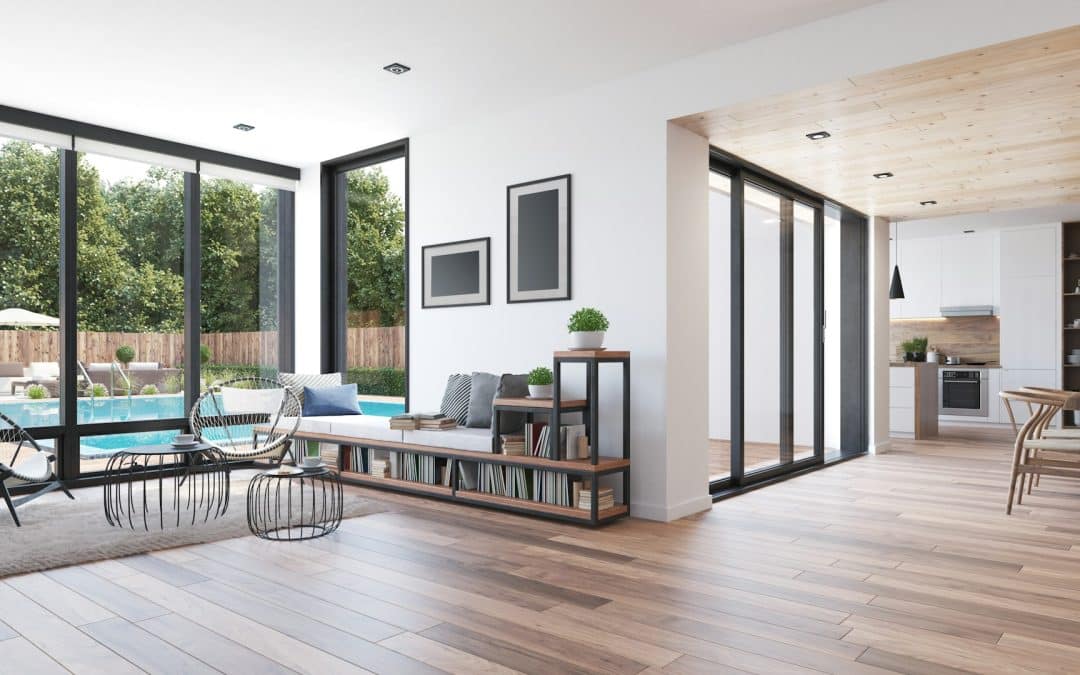A patio door that won’t close all the way isn’t just annoying. It can let in hot air when you’re trying to cool your home or allow bugs and drafts to sneak through the gaps. If your door drags, doesn’t latch, or pops open again after you push it shut, you’re not alone. These issues show up often, especially as your house settles or weather takes its toll on the materials over time.
Beyond being a daily frustration, a faulty patio door can affect your home’s security and energy efficiency. It makes your AC work harder and can raise your monthly bills. It also means your home isn’t as safe if the lock doesn’t work right. If your patio door seems off, recognizing the cause can help you stay in control of your comfort and peace of mind.
Common Reasons Why Your Patio Door Won’t Close Properly
A sliding patio door can stop working smoothly for several reasons. Pinpointing which one is the culprit can help guide the next step. Below are some of the most frequent causes.
1. Misaligned Tracks
Your patio door slides along a track built into your floor and ceiling. That track can get dirty, bent, or out of alignment. Dirt, leaves, or even a small pebble can throw the door off. If the track gets warped or shifted, even slightly, it causes the door to stick, resist movement, or leave a gap when shut.
Keeping the tracks straight and clean is important for proper function. Misaligned tracks make the door drag and can also force extra strain on rollers, making the problem worse over time.
2. Warped or Damaged Door
Wood and vinyl patio doors can swell or bend, especially after years of exposure to heat, rain, or fluctuating moisture. Warping can throw off how the door fits within its frame. This makes the door tough to close and might leave parts of it sticking out past the doorframe.
A warped door won’t seal right and may feel like it’s getting stuck at specific corners. In some cases, the door may look off-center or seem twisted. Dents, cracks, or torn framing from accidental bumps or breaks can also contribute to poor closure.
3. Damaged Rollers or Wheels
The rollers underneath your sliding door are key to smooth operation. If they’re clogged, worn out, or cracked, the door becomes hard to move and even harder to seal. You may even hear a grinding or scraping sound when trying to slide the door open or closed.
If the rollers no longer rotate properly, the door won’t stay level or fit correctly on the track. This makes it tough to get a secure and complete close. Inspecting these parts when there’s trouble is a smart way to tell whether they need an adjustment or full replacement.
4. Problems with Door Latches
A sliding door can roll shut without issue but still not latch, leaving it unlocked or slightly ajar. If the latch or lock mechanism is loose, damaged, or out of alignment, your door has no way to stay fully sealed. That’s a hassle from a comfort standpoint and a risk from a security one.
Misalignment between the latch and the strike plate it’s meant to catch is a common issue. Screws in the handle or lock can also loosen over time. If the latch doesn’t engage or wiggles more than usual, it may need repairing or replacement.
Steps to Fix a Patio Door That Won’t Close
Finding out what’s causing the problem is a good start. The next step is fixing it. While some issues are small and manageable, others may take a skilled hand and a proper eye to get right.
Here are several steps that might help you troubleshoot:
1. Clean and Realign the Tracks
– Use a vacuum to remove loose dirt or debris from the top and bottom tracks
– Wipe them down with warm, soapy water and a cloth
– Apply a silicone-based spray to the track to keep the door sliding smoothly
– Inspect the metal for any bends or dents. If you see one, gently reshape it using pliers
– Slide the door back and forth to test friction. If it still drags or tilts, then adjusting the rollers may be necessary
2. Check for Warping
– Close the door slowly and watch its alignment with the frame. Does one part touch or stop before another?
– Look at the door’s edges from different angles. Twisting or odd curvature in the door signals warping
– Small alignment issues can sometimes be resolved by adjusting hardware such as hinges or brackets
– Larger warping will often need a full replacement, especially if the materials have deteriorated or moisture has entered the core of the frame
3. Look at the Rollers or Wheels
– Open the door partway and lift it gently upward to inspect what’s underneath
– If the rollers look flat, stuck, or cracked, they’ll need replacing
– Some roller systems allow adjustment with a screw located at the base of the door
– Turning clockwise usually raises the door while counterclockwise lowers it
– Make sure any part replaced matches your door make and model to avoid fit issues
4. Test and Repair the Latch
– Turn the handle and make sure the latch moves freely
– If the latch feels stuck, try cleaning the mechanism and checking for loose parts
– Look at how the latch aligns with the strike plate. Often it just needs tightening or repositioning
– If the latch moves loosely or feels broken, getting a new one may be the only way to get a solid seal again
Some adjustments can be time-consuming, especially if parts don’t match or further damage is discovered mid-repair. A technician who works with these doors regularly can help you avoid extra hassle and get long-term results.
When to Call a Professional for Patio Door Repair
Not every fix is simple, and many homeowners find themselves making the same adjustments over and over without solving the issue. If your patio door continues to resist sealing correctly even after you’ve cleaned and realigned things, it’s likely time for expert help.
Here are a few signs to watch for:
– The door frame looks uneven or bowed
– You still feel air or see gaps when the door is “closed”
– The rollers pop off their tracks while the door is in motion
– Adjustments stop making progress, or new problems keep popping up
– Replacement parts don’t sit or fit the way they should
A professional will know how to check beyond the visible issues. They will test how the door sits in its frame, measure alignment, and determine whether anything shifted below the surface. Some problems require specialized tools that homeowners typically don’t have lying around. That includes frame adjustments, hardware replacements, and full installations when conditions call for it.
If you’re in doubt or want fast results, calling a trusted door expert is the best move forward.
Keep Your Patio Door Closing Like New
Once your patio door is closing the way it should, it’s worth keeping it that way. Regular maintenance saves you from future headaches and keeps your home feeling secure and comfortable.
Here are a few tips for keeping things running right:
– Vacuum and wipe down the tracks every couple of months
– Avoid letting leaves or small stones build up at the door base
– Check the rollers and adjust if sliding becomes too stiff
– Test the latch regularly, tightening any loose screws that may show up with wear
– Inspect the door frame for signs of warping from weather or age
A small fix today can go a long way in saving time and money down the line. It’s worth keeping an eye out for even minor changes, and if something starts to feel off, don’t wait. Prompt repair and a bit of upkeep keep larger problems from forming.
Your patio door should be something you use with ease. If that isn’t the case, or you’re tired of struggling with a door that just won’t cooperate, we’re here to help.
Ensure your home stays comfortable and efficient by keeping your patio doors in top shape. If you’re dealing with issues that are difficult to fix on your own, take a look at how our team can help with expert repairs and replacements for patio doors. At American Windows of DFW, we’re here to make sure your doors slide smoothly and seal properly every time.

